Brief Overview of Havelock Island's location and significance
Havelock Island, situated in the Andaman and Nicobar archipelago of India, is a tropical paradise renowned for its stunning natural beauty and pristine beaches. Located about 40 kilometres northeast of the capital city, Port Blair, Havelock Island is the largest among the islands that form the Ritchie's Archipelago. Its strategic location in the Bay of Bengal adds to its allure and accessibility.
Purpose of the guide: Providing a comprehensive understanding of Havelock Island
The purpose of this guide is to offer readers a comprehensive understanding of Havelock Island, encompassing its historical background, geographical features, climate, transportation options, accommodations, attractions, local culture, dining, safety guidelines, and more. By delving into the various aspects of this enchanting island, we aim to equip travelers with the knowledge needed to plan a memorable and fulfilling visit to Havelock Island. Whether you are an adventure seeker, nature lover, or someone seeking relaxation on pristine beaches, this guide will serve as your go-to resource, unlocking the secrets and wonders of Havelock Island.
Historical Background
- Historical significance and early settlements
Havelock Island, part of the Andaman and Nicobar Islands in the Bay of Bengal, holds a rich historical significance. The island was originally inhabited by indigenous tribes, primarily the Onge and Jarawa. These tribes, with their deep connection to the land, established the earliest settlements on Havelock Island. Their presence and cultural heritage have contributed to the island's unique identity.
- Influence of colonial rule and its impact on the island
During the colonial era, Havelock Island, like the rest of the Andaman and Nicobar Islands, fell under British rule. The British established a penal colony on nearby Ross Island and later on the infamous Cellular Jail in Port Blair. While Havelock Island wasn't directly involved in these penal institutions, the colonial presence and activities had a significant impact on the region's development. The British administration introduced infrastructure, such as roads and buildings, transforming the island's landscape.
- Transition towards tourism and development
In recent decades, Havelock Island has experienced a transition from its colonial past to becoming a popular tourist destination. The island's pristine beaches, lush greenery, and captivating underwater world attracted travelers seeking a tropical paradise. Recognizing its potential, the local government invested in developing tourism infrastructure, including resorts, guesthouses, and restaurants. This shift towards tourism and development brought economic opportunities for the local population. However, it also posed challenges in terms of environmental conservation and balancing the needs of the indigenous communities with the demands of the growing tourism industry.
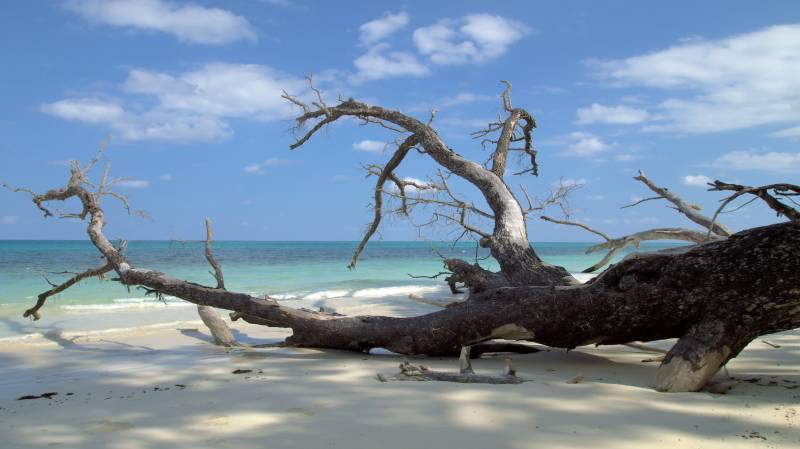
Geographical Features
- Location and size of Havelock Island
Havelock Island, a part of the Andaman and Nicobar Islands, is located in the Bay of Bengal, approximately 40 kilometers northeast of Port Blair, the capital city of the Andaman Islands in India. It is the largest of the islands that form Ritchie's Archipelago. Havelock Island covers an area of about 113 square kilometers (43.7 square miles), making it a significant landmass in the Andaman and Nicobar Islands.
- Topography and Geological Formations
Havelock Island boasts a diverse topography that ranges from lush tropical forests to pristine beaches and rocky cliffs. The island is characterized by its rolling hills, verdant greenery, and coconut palm-fringed shores. The terrain comprises a mix of sandy stretches, rocky outcrops, and elevated areas.
One of the notable geological formations on Havelock Island is its limestone caves. These captivating caves, formed over millions of years through the action of natural forces, are a fascinating attraction for explorers and nature enthusiasts. The caves feature intricate stalagmites and stalactites, creating mesmerizing formations that showcase the island's geological history.
- Biodiversity and Ecological Importance
Havelock Island is renowned for its rich biodiversity and ecological importance. The island is part of the Andaman and Nicobar Islands' unique ecosystem, which is considered one of the world's biodiversity hotspots. Its pristine forests, coral reefs, and coastal areas support a wide array of plant and animal species.
The island's dense forests are home to diverse flora, including endemic species and rare medicinal plants. These forests contribute to the overall ecological balance of the region and provide habitats for various animals, such as the Andaman wild pig, saltwater crocodile, and numerous bird species.
The underwater world surrounding Havelock Island is equally impressive. Its coral reefs are teeming with vibrant marine life, including colorful fish, sea turtles, and a wide range of coral species. The marine ecosystem plays a crucial role in maintaining the overall health and balance of the island's environment.
Recognizing its ecological importance, efforts have been made to conserve and protect Havelock Island's biodiversity. Several initiatives promote sustainable tourism practices, responsible snorkeling and diving, and conservation awareness among visitors.
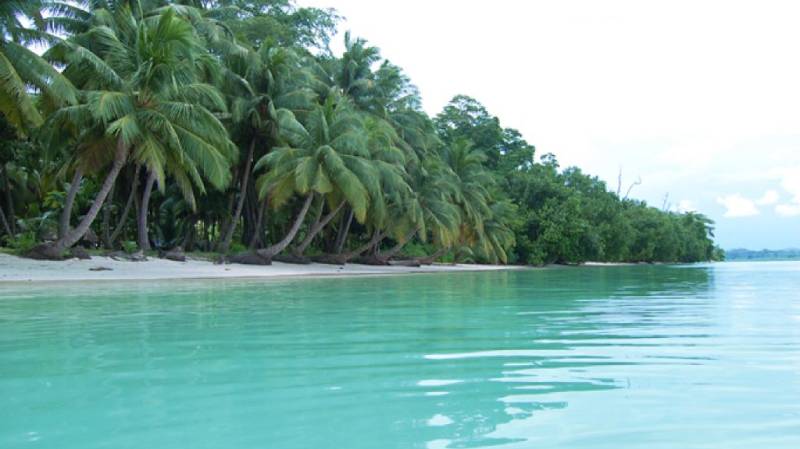
Attractions and Activities
- Beaches and Water Sports:
Radhanagar Beach: Known as the jewel of Havelock Island, Radhanagar Beach captivates visitors with its pristine white sands and crystal-clear turquoise waters. It offers a perfect setting for swimming and sunbathing.
Elephant Beach: Regarded as a snorkeling paradise, Elephant Beach boasts vibrant coral reefs teeming with a rich diversity of marine life. Snorkelers can witness the captivating underwater world up close.
Vijaynagar Beach: Offering serenity and seclusion, Vijaynagar Beach provides a tranquil escape for those seeking peace and solitude amidst breathtaking natural beauty.
Water sports and activities: Adventure enthusiasts can indulge in an array of water sports such as jet skiing, kayaking, banana boat rides, and parasailing, adding an adrenaline rush to their Havelock Island experience.
- Scenic Spots and Nature Exploration:
Kalapathar Beach: With its striking black rocks contrasting against the white sand, Kalapathar Beach offers a picturesque setting and an ideal spot for leisurely walks and quiet contemplation.
Neil's Cove: A hidden gem, Neil's Cove showcases stunning natural beauty with its tranquil lagoon and lush green surroundings. It's perfect for nature lovers and photographers.
Trekking and hiking opportunities: Havelock Island presents exciting opportunities for trekking and hiking enthusiasts. The island's verdant forests and hilly terrain offer trails that lead to breathtaking viewpoints, rewarding adventurers with panoramic vistas.
Exploring the vibrant coral reefs: Havelock Island is a haven for divers and snorkelers. Its thriving coral reefs are home to a kaleidoscope of colorful fish, sea turtles, and other fascinating marine creatures, providing an unforgettable underwater experience.
Popular diving spots and dive centers: Dive sites like The Wall, Aquarium, and Seduction Point offer diverse underwater landscapes and encounters with mesmerizing marine life. Dive centers on the island provide professional guidance and equipment rental for beginners and experienced divers.
Underwater photography and marine conservation efforts: Havelock Island also supports underwater photography enthusiasts, allowing them to capture the beauty of its marine world. Additionally, various initiatives and organizations promote marine conservation and responsible diving practices to preserve the delicate ecosystem.
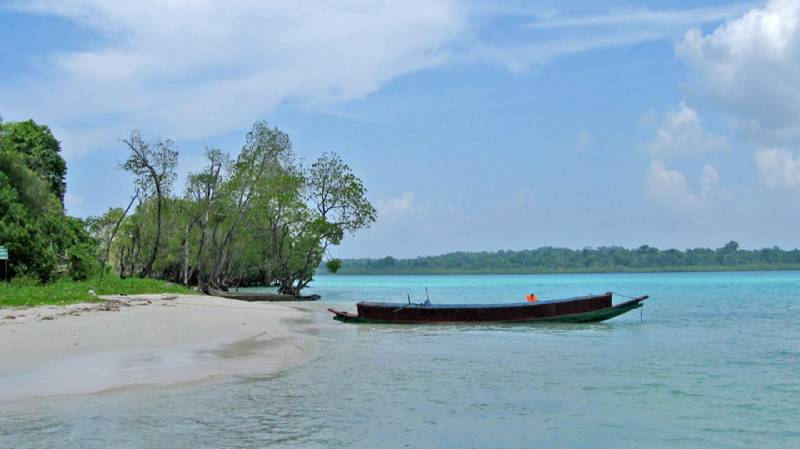
Getting There
Transportation options to reach Havelock Island:
- Air travel: Flights to the nearest airport The closest airport to Havelock Island is the Veer Savarkar International Airport in Port Blair, the capital of the Andaman and Nicobar Islands. This airport is well-connected to major cities in India, such as Delhi, Mumbai, Kolkata, and Chennai. Several domestic airlines operate regular flights to Port Blair. From the airport, you can proceed to Havelock Island by sea.
- Sea travel: Ferries and catamarans from various locations Sea travel is a popular and scenic way to reach Havelock Island. Regular ferry and catamaran services operate between Port Blair and Havelock Island. The journey takes approximately 2-3 hours, offering breathtaking views of the turquoise waters and lush landscapes. Government-operated ferries are the most economical option, while private catamaran services offer a faster and more luxurious experience.
Tips for planning and booking travel arrangements:
- Book in advance: As Havelock Island is a popular tourist destination, it is advisable to book your travel arrangements in advance, especially during peak seasons. This includes flight tickets, ferry or catamaran tickets, and accommodation.
- Check ferry schedules: Ferry schedules can vary depending on the season, weather conditions, and demand. It is recommended to check the ferry timings and availability beforehand to plan your travel accordingly.
- Pack essentials: Prepare for your journey by packing essentials such as sunscreen, mosquito repellent, comfortable clothing, and any necessary medication. It's also advisable to carry some cash as ATMs might be limited on the island.
- Be mindful of weather conditions: Havelock Island experiences tropical weather and certain seasons may have more rainfall or rough seas. Keep track of weather forecasts and plan your visit accordingly to avoid any inconvenience.
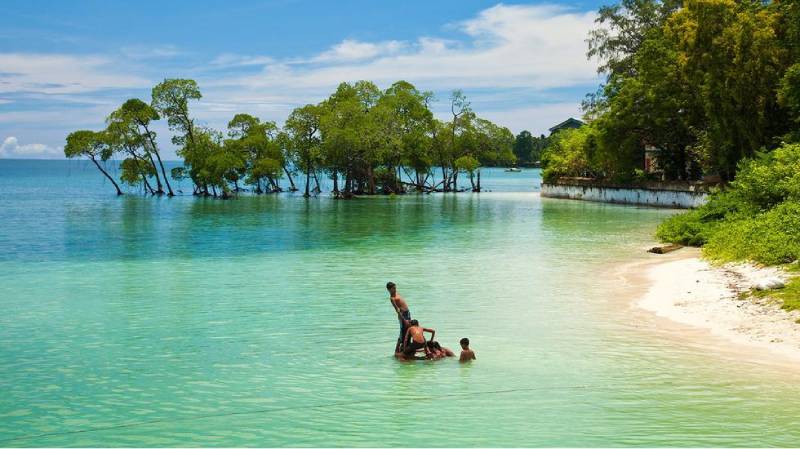
Local Culture and Traditions
- Overview of the local culture and indigenous tribes
Havelock Island, located in the Andaman and Nicobar Islands of India, is rich in cultural diversity and home to indigenous tribes. The primary indigenous tribe inhabiting the island is the Sentinelese, who reside in seclusion and have limited contact with the outside world. They have a unique way of life, deeply rooted in their ancient customs and traditions.
Apart from the Sentinelese, there are also other indigenous tribes in the Andaman and Nicobar Islands, such as the Jarawas and the Great Andamanese, who have small populations and reside in designated areas. These tribes have their own distinct cultures, languages, and traditional practices that have been passed down through generations.
The local culture of Havelock Island is influenced by these indigenous tribes as well as the settlers who have migrated to the island over the years. The fusion of different cultures has created a vibrant and diverse community. The inhabitants of Havelock Island are known for their warm hospitality and friendly nature, making visitors feel welcome and immersed in the local culture.
- Festivals and celebrations
Festivals and celebrations play a significant role in the cultural fabric of Havelock Island. These occasions provide an opportunity for the locals to come together, celebrate their traditions, and showcase their rich heritage. Some of the prominent festivals celebrated on the island include:
Island Tourism Festival: Held annually in January, this festival showcases the cultural diversity of the Andaman and Nicobar Islands. It features traditional music and dance performances, handicraft exhibitions, and various competitions.
Diwali: The festival of lights is celebrated with great enthusiasm on Havelock Island. The locals illuminate their homes with earthen lamps, burst fireworks, exchange sweets, and participate in community gatherings.
Christmas: As a predominantly Christian population resides on the island, Christmas is celebrated with joy and fervor. Decorations adorn the houses, carol singing takes place, and churches hold midnight masses.
- Arts and crafts: Traditional handicrafts and souvenirs
The arts and crafts of Havelock Island reflect the island's cultural heritage and offer visitors a chance to take home unique souvenirs. Local artisans skillfully create a variety of handicrafts using traditional techniques and natural materials. Some popular examples include:
Shell Crafts: The abundant seashells found on the island are skillfully transformed into decorative items such as jewelry, wall hangings, and lampshades. These intricately crafted shell products are beautiful mementos to cherish.
Bamboo Crafts: Bamboo is a versatile material used in crafting a wide range of products such as baskets, trays, mats, and furniture. The locals showcase their craftsmanship by intricately weaving and shaping bamboo into functional and decorative items.
Wood Carvings: Skilled woodcarvers on the island create exquisite sculptures and figurines using locally sourced wood. These carvings often depict mythological figures, animals, and scenes from local folklore, showcasing the rich artistic traditions of the region.
Visitors to Havelock Island can explore local markets and handicraft stores to find these traditional crafts. These unique and authentic pieces not only serve as reminders of the island's culture but also support the local artisans and their livelihoods.
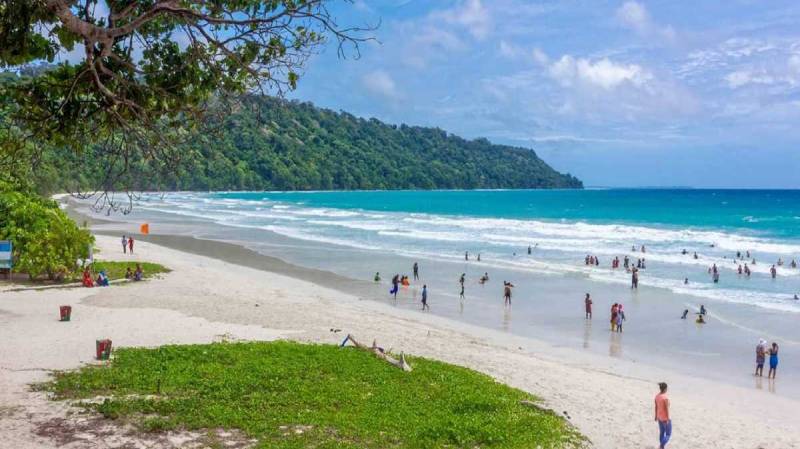
Accommodation and Infrastructure
- Range of accommodation options available on Havelock Island
Havelock Island offers a diverse range of accommodation options to suit the preferences and budgets of various travelers. From luxury resorts to budget-friendly guesthouses, there is something for everyone. The island has seen significant development in recent years to cater to the growing tourism industry.
Luxury resorts on Havelock Island provide world-class amenities and breathtaking views. These resorts offer spacious rooms, private villas, and exclusive beach access. Some of them even have their own diving centers, spas, and multiple dining options. These resorts are perfect for travelers seeking a luxurious and indulgent experience.
For mid-range travelers, there are several comfortable hotels and cottages available. These properties often feature cozy rooms, well-maintained facilities, and friendly staff. They offer a balance between comfort and affordability, making them popular choices among many tourists.
Budget-conscious travelers can find affordable guesthouses, homestays, and backpacker hostels on Havelock Island. These accommodations provide basic amenities, clean rooms, and a friendly atmosphere. They are ideal for those who prioritize budget savings while still enjoying a pleasant stay.
- Overview of tourist facilities and infrastructure
Havelock Island has witnessed significant improvements in its tourist facilities and infrastructure over the years. The island offers a range of facilities to ensure a comfortable and enjoyable experience for visitors.
Transportation on the island is relatively easy, with well-connected roads and reliable taxi services. Renting scooters or bicycles is a popular way to explore the island at one's own pace. Additionally, auto-rickshaws are available for short-distance travel.
The island also boasts a variety of restaurants and cafes serving both local and international cuisine. From fresh seafood delicacies to vegetarian options, visitors can find a wide array of dining choices to suit their taste buds.
Tourist facilities include dive centers, snorkeling equipment rentals, and organized tours for exploring the stunning underwater world and coral reefs surrounding the island. Additionally, there are facilities for water sports like kayaking, paddleboarding, and jet skiing, providing thrilling adventures for adrenaline seekers.
- Recommendations for finding suitable accommodation
When looking for accommodation on Havelock Island, it is advisable to book in advance, especially during peak travel seasons. Online travel platforms and hotel booking websites provide a convenient way to compare prices and read reviews from other travelers.
Consider the location of the accommodation in relation to the island's attractions and activities. Staying near the popular beaches like Radhanagar Beach or Vijaynagar Beach allows for easy access to their beauty and water sports options.
It is also worth considering the facilities and services offered by the accommodation. If you have specific requirements, such as Wi-Fi access, air conditioning, or a swimming pool, make sure to check if they are available.
Reading customer reviews can provide valuable insights into the quality of service and cleanliness of the accommodations. Pay attention to recent reviews for up-to-date information.
Finally, it is recommended to contact the accommodation directly for any specific inquiries or special requests you may have. They can provide personalized assistance and ensure a smooth stay.
Conclusion
Havelock Island, with its pristine beaches, vibrant marine life, and lush tropical landscapes, offers a truly captivating experience for nature lovers and adventure seekers. From the breathtaking Radhanagar Beach to the enchanting underwater world of its coral reefs, Havelock Island is a paradise waiting to be explored. With its rich cultural heritage and warm hospitality, visitors can immerse themselves in the local traditions and savour the delectable cuisine. Whether you seek relaxation or excitement, Havelock Island promises unforgettable memories. So, pack your bags, embrace the island's allure, and embark on a journey to discover the beauty of Havelock Island for yourself.









